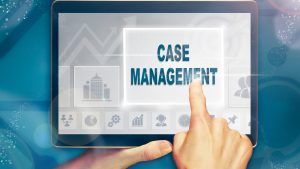You may have heard the terms Procurement Management and Supply chain management so many times… But do you know the exact meanings of them and how they differ from one another?
Or are you someone assumes that they are all the same!
Either way, let Tigernix’s experts break down the Procurement Management and Supply Chain Management process to help you understand each of them easily.
What is Procurement Management?
Procurement management is the process of acquiring the goods and the services needed for a company to fulfil the basic needs of the business. This includes buying the right raw materials to meet the specs to hiring logistics partners to transport the raw materials to selecting the right IT solution provider. Procurement management ensures that the right goods and services are available at the right time enabling the projects and operations to run smoothly and successfully. Failing to manage the processes as planned is one of the costliest mistakes that can happen in an organization as the delayed in procurement management will put everything on halt. The process will be managed by a project manager who collaborates with the purchasing department of a company and will focus on getting the best quality for the best price in a timely manner in compliance with the required standards.
Below are some of the tasks related to the procurement management process.
- Purchase planning
- Quality standards development
- Identifying suitable suppliers
- Price negotiations
- Financing purchases
- Inventory control
- Acquiring required goods and services
- Inventory control
- Disposal of waste production
What is Supply Chain Management?
Supply chain management or SCM is managing the movement of your goods and services from your supplier to manufacturer, warehouse to the whole seller, retailer until it reaches the consumer’s doorstep. Supply chain management involves transportation, movement, and storage of goods and materials and is one of the most important in providing a quality service and satisfying customer experience. Planning, coordinating and integrating this movement effectively and efficiently will help you maximize the customer value and attain a sustainable competitive advantage. Mainly there are three types of supply chain processes.
They are
- The product flow
Include all the movement processes from raw material movements from suppliers to product delivery to and returns form the customer. - The information flow
Include transmitting orders for updating the status of delivery - The finances flow
Include all the activities related to credit terms, payment schedules, to title ownership arrangements.
Some of the tasks involved in Supply Chain management are
- Planning long-and short-range supply chain strategies.
- Procurement management
- Production
- Distribution (logistical flow of goods across the supply chain)
- Customer Interface (Resolving issues around planning customer interactions, request, and fulfilling orders)
Difference
In a nutshell, Procurement management is only a piece of the Supply chain management. If supply chain management is like a table procurement management is like a leg of the table that takes part to make a complete functioning product. Supply chain management is much more complex than procurement management and responsible for the smooth process of procurement functions.
If you need any more clarification regarding procurement management and supply chain management feel free to contact our experts.






